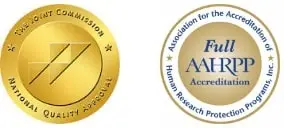Bone Marrow Transplant – FAQs
What is Blood Marrow Transplantation?
Blood and Marrow Transplantation is a form of intensive treatment used to treat certain cancers like leukaemias, lymphomas and some non-cancerous diseases like thalassemia.Bone marrow is found inside our bones, and is the ‘factory’ that makes blood. It is responsible for producing white blood cells (to protect against infection), red blood cells (to carry oxygen around the body) and platelets (to prevent bleeding). Stem cells are blood cells at their earliest stage of development in the bone marrow, before they have become committed to developing into white cells, red cells or platelets. It is these stem cells which are the key factors in transplantation. They replace the diseased marrow as well as provide immunity against cancers and infections.
What are the different types of blood and marrow or stem cell transplantation?
There are two main types of transplants – Autologus and AllogenicAutologus Transplants : This means that the bone marrow or stem cells used for the transplant are one’s own. A little bit of the patient’s bone marrow or peripheral blood stem cells is taken and stored before high dose treatment.When the treatment is over, the bone marrow or stem cells are given back through a vein.Allogeneic Transplants:In this type of transplant, bone marrow donated by someone else is used. It is essential that the donor’s tissue matches. The most suitable donor is usually a close relative, most commonly a brother or sister.Rarely, parents can also be the source for haploidentical transplants.It is also possible to get a good match from an unrelated donor from international registries. Umblical cord blood stem cells from public cord blood banks is also available in India.There are three main steps in the transplantation process-The first step – The aim here is collection of the bone marrow or stem cells (the harvest) from the donor. We now know that the umbilical cord blood is also rich source of stem cells.The second step – The aim in this step is to completely destroy the exiting bone marrow and thereby help the patient receive the new stem cells.The third step – The aim here is to in fuse the bone marrow or stem cells through the intravenous route, like a blood transfusion. There may be no signs of a new bone marrow growing for two to three weeks, and occasionally it may be a few months before the new bone marrow produces all the components of the blood adequately.
How are the peripheral blood stem cells collected?
Stem cells harvesting is done following a course of daily injections of growth factor. This procedure takes about 3 hours. The patient will be made to lie down on a couch and a transfusion will be put into the vein of each arm. Blood will be collected from one arm, into a machine called a centrifuge, which spins it to separate out the stem cells. These are collected, and the remaining blood is returned through the vein in the other arm. In some cases it is curative, in others it is the only way to controls the disease and prolong life.


